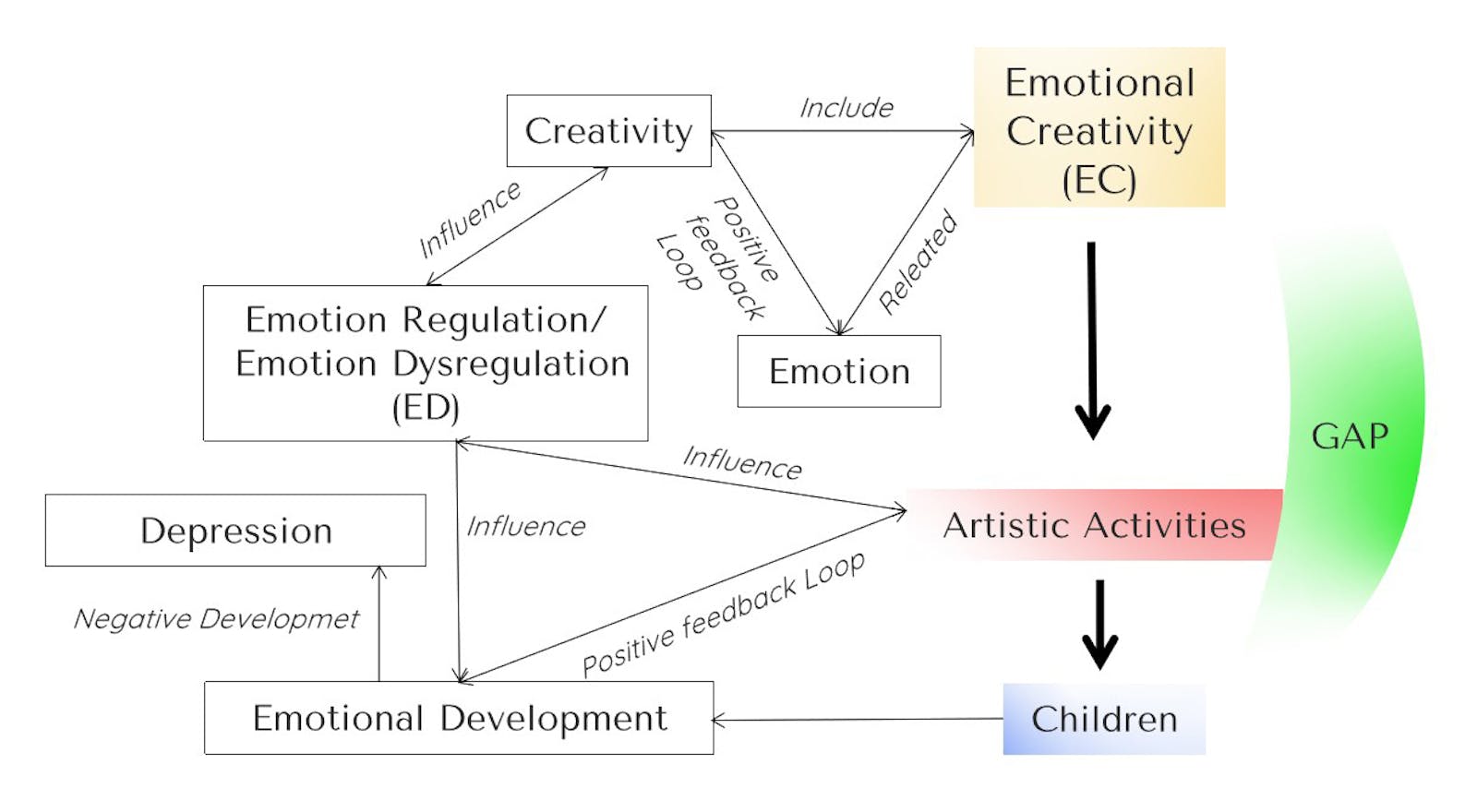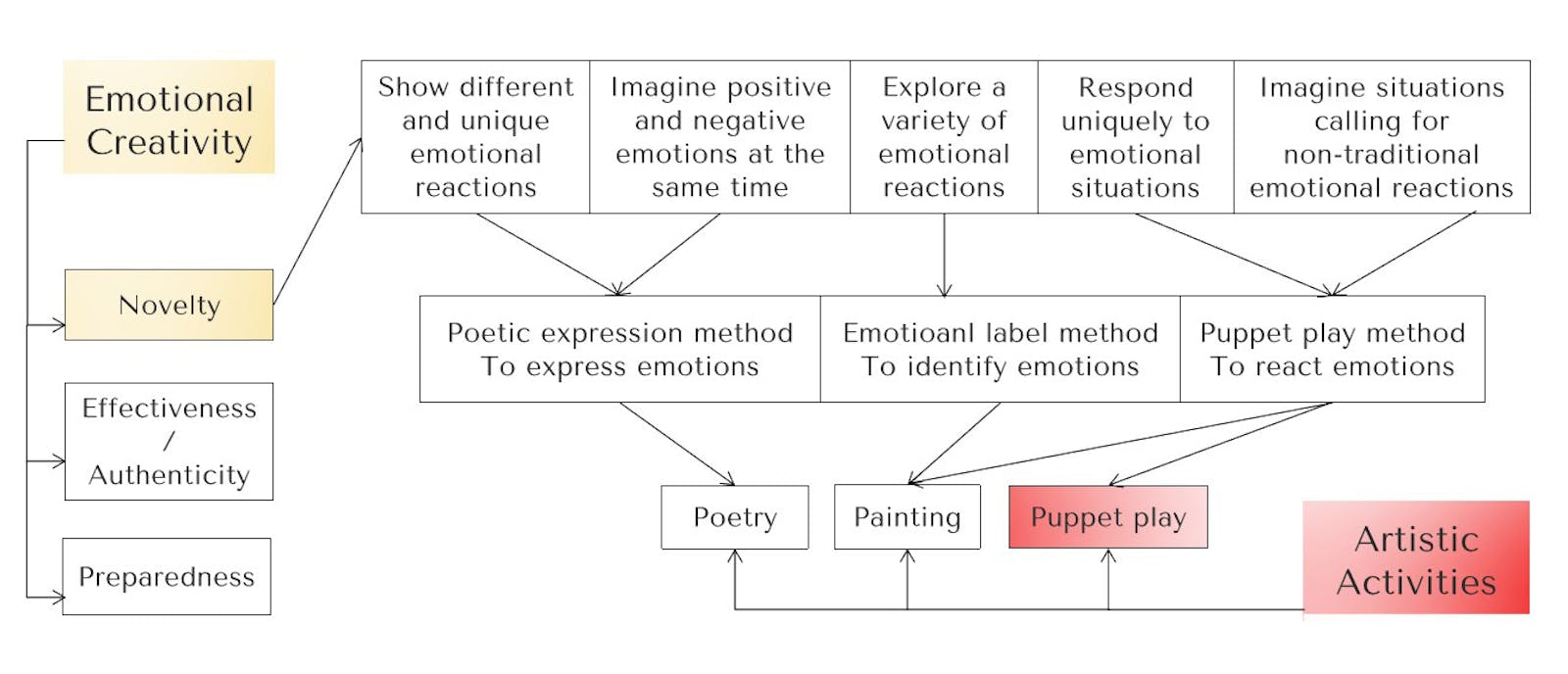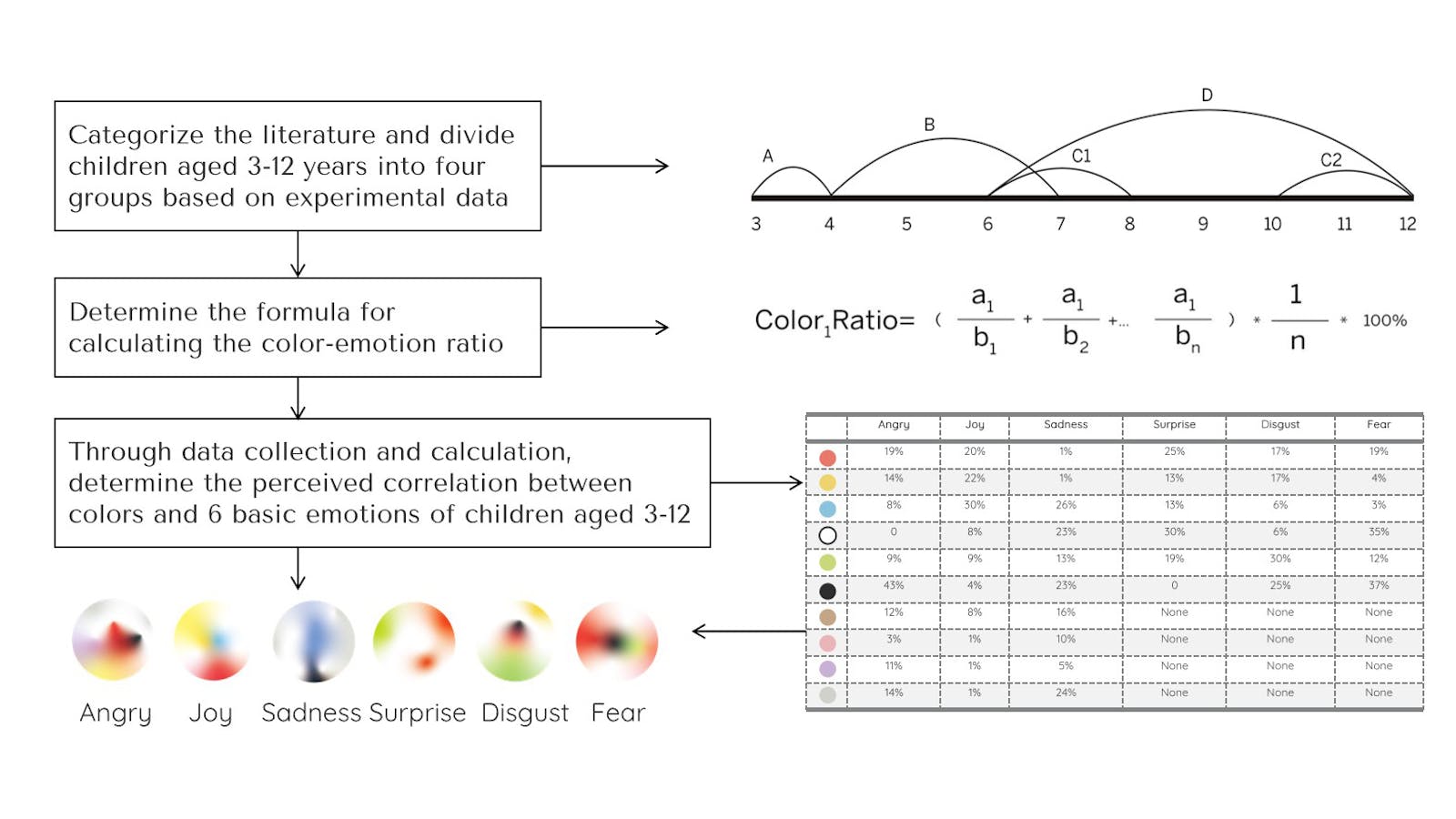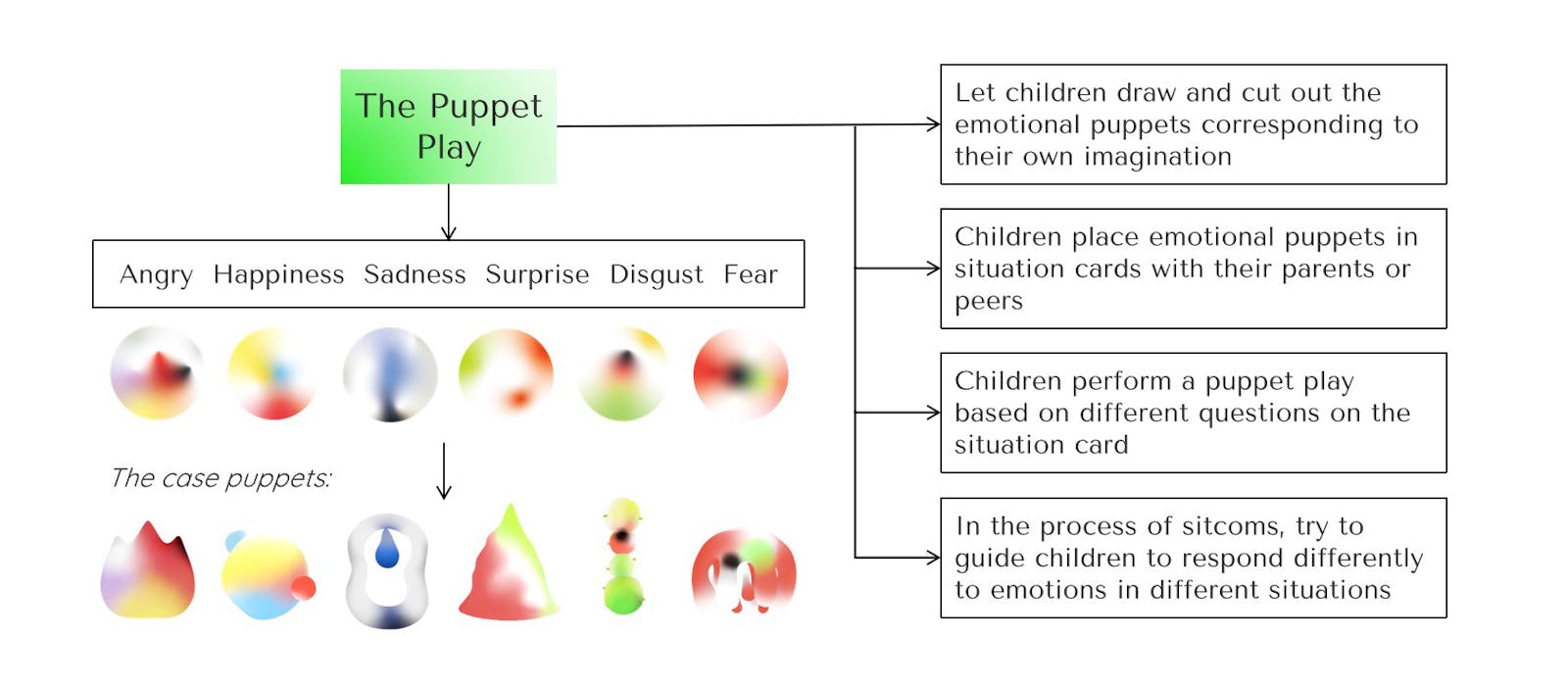YANNING ZHENG
Increasing children’s emotional creativity in artistic activities through course design
Summary
Studies have shown that children who cannot develop emotional regulation well in childhood face a greater risk of depression in youth and adulthood, and the emotional regulation can be measured by emotional creativity indicator. Averill (2009, 2013) defines three dimensions of EC: (1) Novelty, (2) Effectiveness and Authenticity, (3) Preparation. It has shown that artistic activities which link to creativity can modulate emotions, but there is no direct evidence showing that artistic activities can improve children’s emotional creativity. Therefore, the author’s research is focusing on filling the gaps in this field.
Through workshops and interviews, the author reduced the research field to increase the emotional creativity-novelty dimension and used the atomize method to construct a series of teaching card designs through poetry, painting, and puppet play. In the verification stage, the author designed an online EC-Artistic workshop, through qualitative research, to determine the positive effect of puppet play in enhancing the emotional creativity of children aged 9-12. This research actively explores new ways to improve children’s emotional creativity- novelty, which will help children better build an emotional regulation framework, help them actively spend their emotional development period, and reduce the possibility of depression or suicidal tendency in the future. The author will continue to pay attention to the remaining two dimensions of EC and conduct artistic curriculum design for children of a wider range of ages.
Research Motivation
“WHAT IF…?
What if people who are suffering from depression even suicidal tendency could get positive emotional regulation guidance from their childhood?
Will they have a different life... ? ”
Resreach Gap

There are diverse evidences show that the link between emotional development, emotion regulation, creativity, and emotion. As the part of creativity, emotional creativity can be the strong factor to respond the issue of emotion dysregulation, but there is not enough evidence showing how EC influence the ED through artistic activities in children’s group. Thus, it is the research gap of the project.
Research Method - The Atomize

The atomize method is a way to break down a system into its parts by repeatedly asking how does this component break down further? The smaller parts of the overall system are the atoms that are the fundamental building blocks of the larger idea (Thedesignexchange, 2017). The author used this method to disassemble complex emotional creativity concepts into small pieces that can be analyzed and introduce artistic activities to influence and intervene in these small factors, thereby constructing an artistic activity curriculum based on enhancing emotional creativity. In addition, due to the huge system of emotional creativity and novelty as the first dimension, it is most closely related to creativity, so the author focuses on the promotion of emotional creativity-novelty in this research.
Research Method - The Grounded Theory

The grounded theory is a research method in which we construct a theory from a collection of data. The author uses this research method to determine the correlation between emotion and color from the perspective of children. Ekman proposed six basic emotions: fear, anger, joy, sadness, disgust, and surprise (Gu, Wang, Patel, Bourgeois, & Huang, 2019). This research not only helped the author lay the foundation for the use of colors in the subsequent classroom design, but also helped children establish a preliminary understanding of the relationship between emotion and color.
Research Method - The Puppet play

Puppet play can support children by giving them a “friend” to talk to, or a way to express to other children without having to address, and it also provides children opportunities to interact and explore their knowledge and understanding of the world. Therefore, the author selects this method to help children express their emotion in different situations with the scenario cards.
